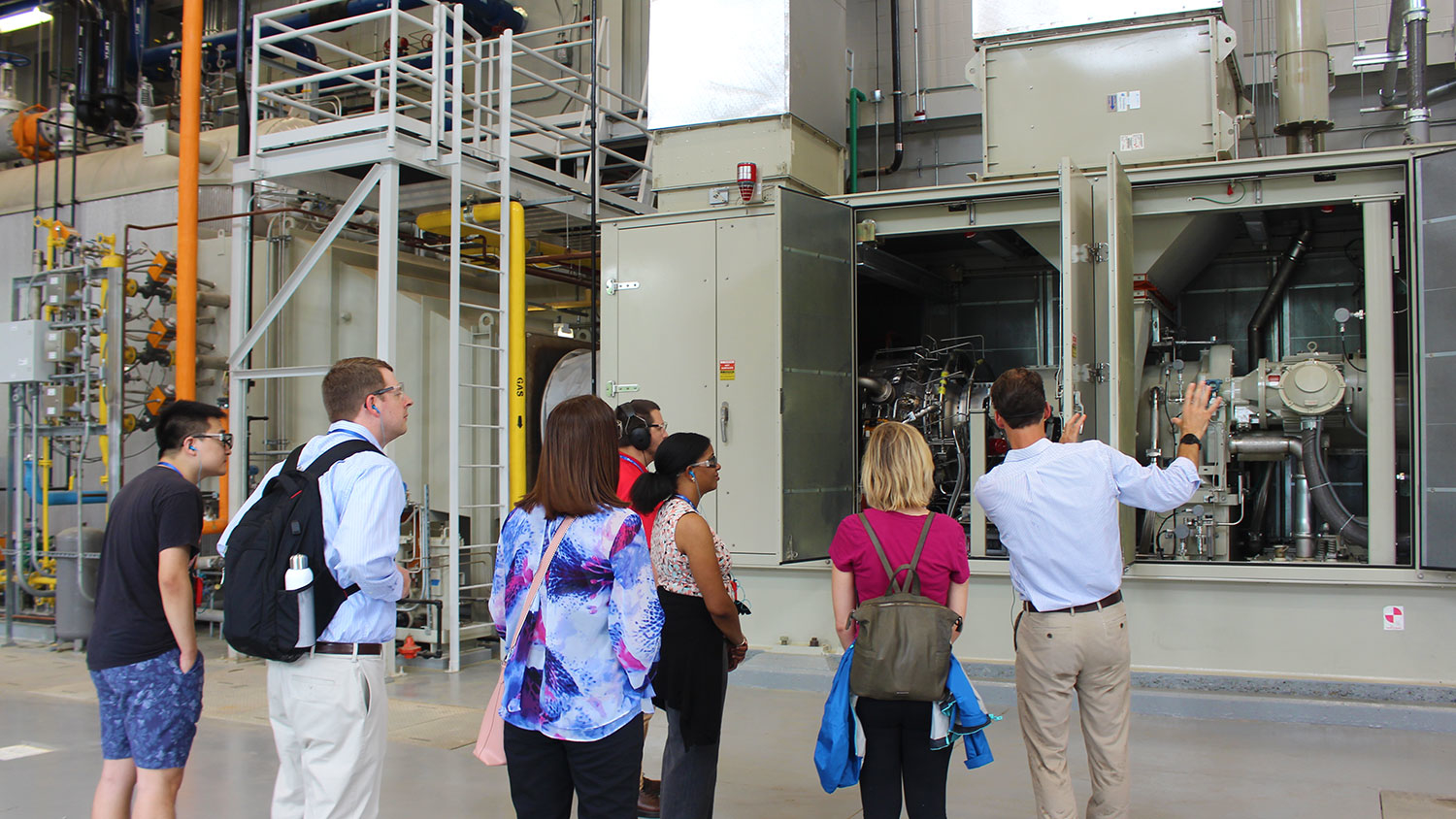Record-Setting Reduction

Energy and water are among NC State’s most necessary and costly expenses. Through proactive energy and water management, the university is continuing to create important utility savings.
NC State’s 2019 Strategic Energy and Water Report highlights the university’s efforts to reduce utility use and cost during the 2019 fiscal year. Produced by the Energy Management office of the university’s Facilities Division, the report includes utility usage, results of efficiency projects and future plans for utility conservation.
“We are a large campus, and a large user of energy and water. The more we can actively manage our use and create efficiencies, the better stewards we are of resources,” said Shanna Harwell, NC State’s interim director of Energy Management.
During the 2019 fiscal year, campus energy use intensity per gross square foot declined to 34 percent from the baseline fiscal year of 2002-2003. That’s a record reduction for the university, which has been actively managing utility usage for more than a decade.
Overall, energy accounts for 85% of NC State’s utility expenditures. The remaining 15% is spent on potable and reuse water. Reuse water ‒ sometimes called reclaimed water or non-potable water ‒ is wastewater treated to a high standard and reused instead of being discharged into a waterway.
During the 2019 fiscal year, NC State’s potable water use per gross square foot was 50 percent below the baseline fiscal year of 2001-2002.

NC State is tracking toward two major goals: a 40 percent reduction in energy use intensity and a 65 percent reduction in water use per gross square foot. Among the projects expected to fasttrack the university toward these goals is cogeneration technology at the Centennial Campus Utility Plant. Also known as combined heat and power, this technology allows the university to convert waste heat into steam, producing approximately $1.6 million in energy savings annually.
Other energy-saving projects this past fiscal year include building commissioning, LED lighting upgrades, HVAC scheduling and window film that reduces solar heat gain.
Later this year, NC State will finish construction on thermal energy storage, which will store 3.4 million gallons of chilled water and offset the need to operate chillers during the day when electricity prices are highest.
“All of these projects help reduce our utility use and expenses. Together with energy and water-saving actions from the campus community, we can continue our trend toward greater efficiency,” Harwell said.
The full Energy and Water Report is available online.
- Categories: